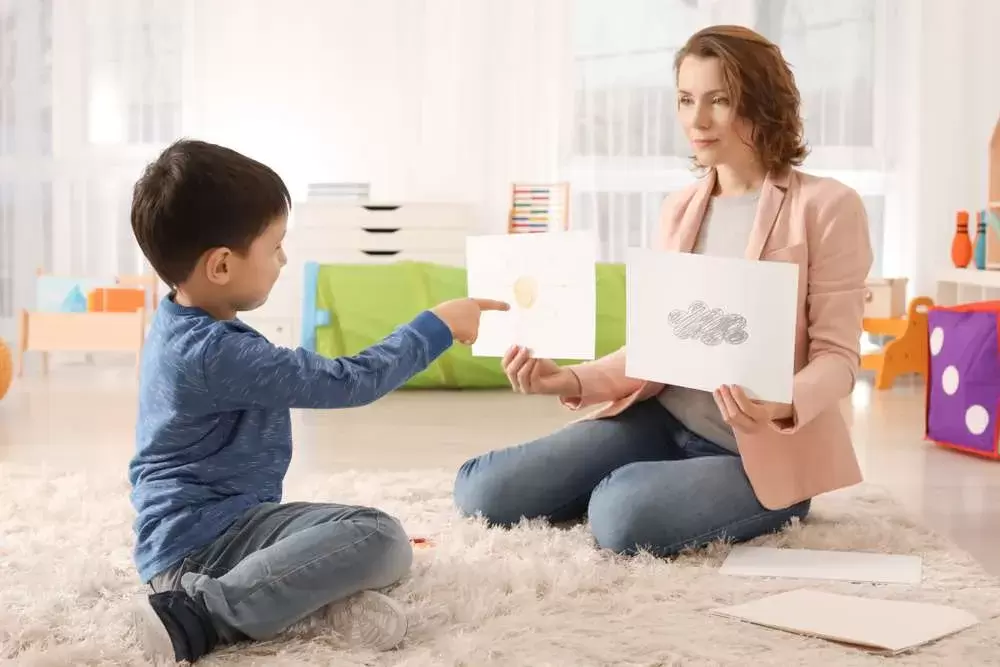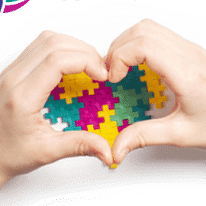- Contact Us
- (908) 874-0417
- Member Login
- Get Listed Now

Starting on a path to unlock the incredible capabilities of children with autism, Applied Behavior Analysis (ABA) therapy stands as a fundamental support system. At its essence, the Prompt Hierarchy is a crucial element designed to enhance learning and develop vital skills significantly. This overview seeks to demystify the Prompt Hierarchy, shedding light on what it is, why it's so crucial, and how it plays a transformative role in helping autistic children achieve their best. By exploring this concept, we aim to reveal how the Prompt Hierarchy can make a profound difference in the developmental journeys of these children, ensuring a more engaging, supportive, and effective learning experience.
What is the Prompt Hierarchy in ABA?
The Prompt Hierarchy in ABA introduces a thoughtfully organized method of employing cues or prompts to aid learners in acquiring and mastering desired behaviors. This technique involves a range of prompts that are carefully tapered from more direct to less direct, meticulously tailored to the learner's unique needs and pace of development. By progressively reducing the level of assistance, the strategy fosters learners' independence and proficiency in skills, ensuring that support is provided to honor their learning paths.
Prompt Hierarchy Examples 
Expanding on the concept of Prompt Hierarchy inApplied Behavior Analysis (ABA) with real-life examples offers a more tangible understanding of how these strategies can be applied to support children with autism in their learning and development:
Verbal Prompts: Imagine teaching a child to say "please" when asking for something. A verbal prompt might gently remind them by saying, "What do we say?" before they make a request, helping them remember to use polite language in social interactions.
Gestural Prompts: If a child is learning to brush their teeth, a therapist might point to the toothbrush, then to the toothpaste, and finally to their mouth, guiding them through the process without verbal instructions, emphasizing non-verbal communication skills.
Modeling: In a scenario where a child is learning to tie their shoes, an adult might sit in front of them and slowly tie their shoes, demonstrating each step. The child watches and then attempts to mimic the actions, enhancing their observational learning.
Physical Prompts: When a child is learning to use a spoon, a caregiver might initially guide the child's hand with the spoon to their mouth. Over time, this assistance is reduced as the child becomes more adept, promoting motor skill development and independence.
Each of these examples highlights the adaptability and personalized approach of ABA therapy, emphasizing its potential to meet each child's unique needs and learning style.
Why Prompt Hierarchy Is Important
Why prioritize a structured prompt system in ABA? It's about crafting a learning journey that respects each child's pace, challenges, and potential. Here, we explore how the prompt hierarchy not only individualizes therapy but also scaffolds learning efficiently, minimizes reliance on help, and encourages the broad application of new skills. This section sheds light on the transformative power of prompt hierarchy in nurturing autonomy and adaptability in children with autism.
Individualized Support: Tailoring interventions to meet each child's specific needs and abilities, prompt hierarchy ensures a personalized learning experience, recognizing every learner’s unique pace and style.
Effective Learning: The prompt hierarchy employs a systematic and structured approach, facilitating gradual skill acquisition and making learning more manageable and less overwhelming for the child.
Reduced Prompt Dependency: Strategically fading prompts encourage children to rely less on external assistance, promoting independence and confidence in their abilities to perform independently.
Generalization of Skills: This method focuses on learning specific tasks and applying these skills across various settings and situations, enhancing adaptability and functional application of learned behaviors.
Types of prompts
In ABA therapy, understanding the nuanced layers of the Prompt Hierarchy is pivotal for effectively teaching and guiding autistic individuals. This structured approach meticulously balances support levels, facilitating a journey from dependency to autonomy.
Full Physical Prompts
This initial stage involves direct, hands-on assistance to guide the learner through a new task or skill. It represents the highest level of support within the hierarchy, crucial for the initial learning phases.
Partial Physical Prompts
A step towards greater independence, partial physical prompts reduce the amount of physical assistance, guiding only part of the task to encourage the learner's effort.
Modeling
Here, the therapist demonstrates the desired behavior, serving as a live example for the learner to observe and imitate, bridging the gap between physical assistance and more autonomous forms of learning.
Gestural Prompts
Utilizing non-verbal cues like gestures or pointing, these prompts provide visual guidance without direct physical contact, fostering an understanding of tasks through visual means.
Verbal Prompts
With minimal intervention, verbal prompts involve spoken instructions or cues, pushing the learner toward self-initiation and task completion, highlighting the move toward independence.
Natural Cues
The most autonomous stage, relying on environmental cues to prompt the desired behavior, encourages learners to respond to their surroundings with minimal to no direct intervention from the therapist.
The Continuum of Intrusiveness in Prompts 
Determining the appropriate level of intervention is pivotal in ABA therapy, as it directly influences a learner's path toward gaining new skills and achieving independence. This nuanced approach ranges from the most to the least intrusive prompts, each serving a unique purpose in the learning process:
Most Intrusive Prompt: Full physical prompts stand as the pinnacle of guidance, offering hands-on assistance to learners. This method is particularly beneficial in early skill acquisition or when a learner faces substantial challenges. For example, guiding a child's hands to help them learn how to wash their hands ensures they grasp the fundamental steps before gradually reducing the level of assistance.
Least Intrusive Prompt: At the other end, verbal prompts provide a subtle nudge towards the correct action with minimal intervention. This could involve instructing a child to wear their jacket as they prepare to go outside, fostering a sense of responsibility and independence as they remember and perform tasks with verbal cues alone.
These examples underscore the thoughtful application of different prompts within ABA therapy, emphasizing a balanced approach to support each learner's unique journey toward skill mastery and independence.
Refining ABA Prompting Procedures
The structured approach of prompt hierarchy in ABA therapy is pivotal for enhancing learning and behavioral outcomes. This segment elaborates on the systematic procedures pivotal in implementing prompt hierarchy effectively:
Prompt Level Determination: This initial step thoroughly assesses the individual's abilities to select the most suitable prompt level, ensuring the starting point is accessible and challenging.
Gradual Prompt Fading: As skills improve, prompt intensity or frequency is deliberately reduced, fostering increased independence and confidence in the learned behaviors.
Reinforcement: Correct responses are consistently reinforced, which amplifies motivation and solidifies the acquisition of desired behaviors.
Data Collection and Analysis: Ongoing data tracking is crucial for evaluating progress, informing the necessity for prompt adjustments, and tailoring interventions to meet evolving needs.
Embracing the Journey with ABA
Within the strategic framework of ABA therapy, the Prompt Hierarchy plays a vital role in fine-tuning the learning process, enabling individuals with autism to progress toward greater independence. For parents considering ABA for their child, grasping the importance of the Prompt Hierarchy marks a crucial step in actively participating in their child's educational journey. Embarking on this path opens avenues to enhance independence and brighten the futures of autistic children, underscoring our shared commitment to their success. Discover how Circle Care can be part of this transformative journey—Sign up for more information and start ABA therapy today to support your child's thriving future.
|
|
Added By: | |

|
Circle Care Services Family Activities Highland Park, NJ 08904 US |
| View Profile » Contact » | |
